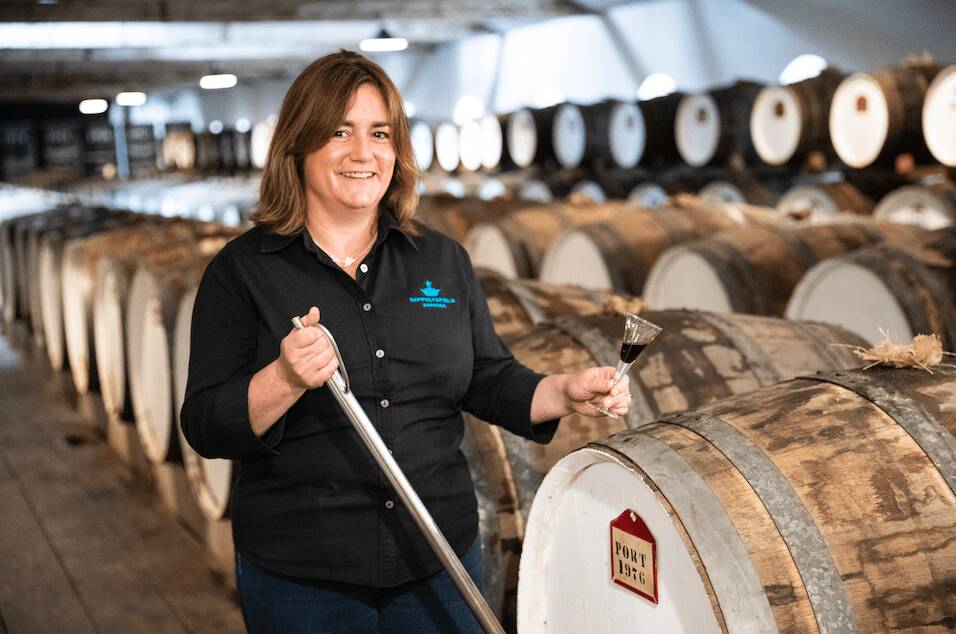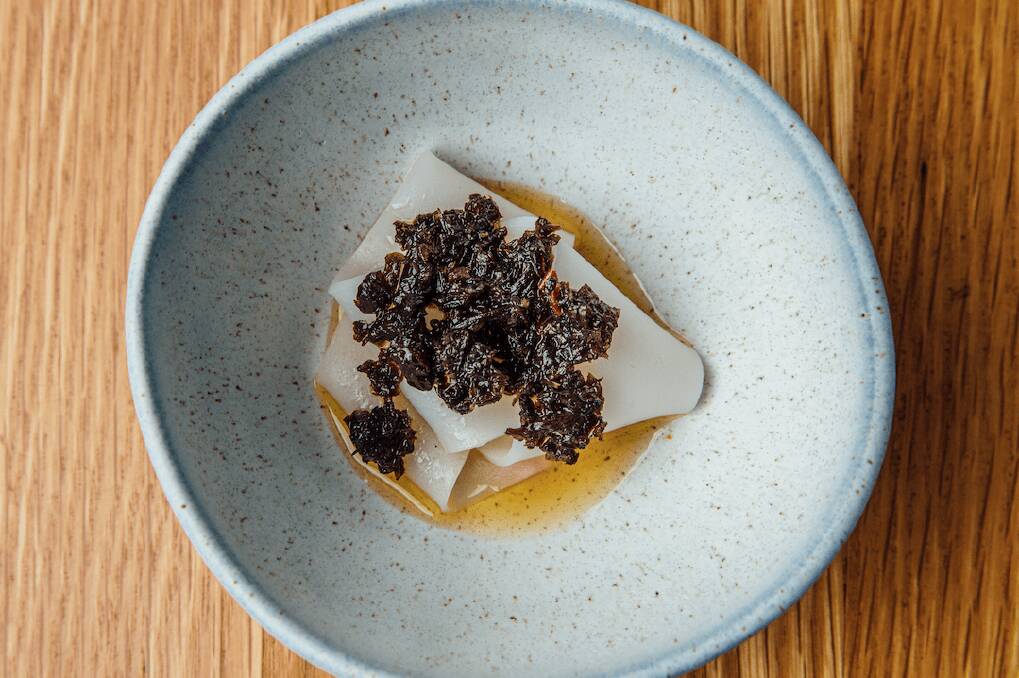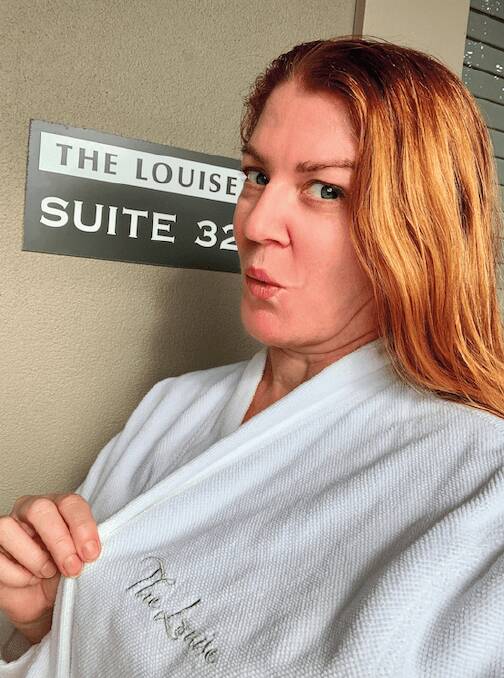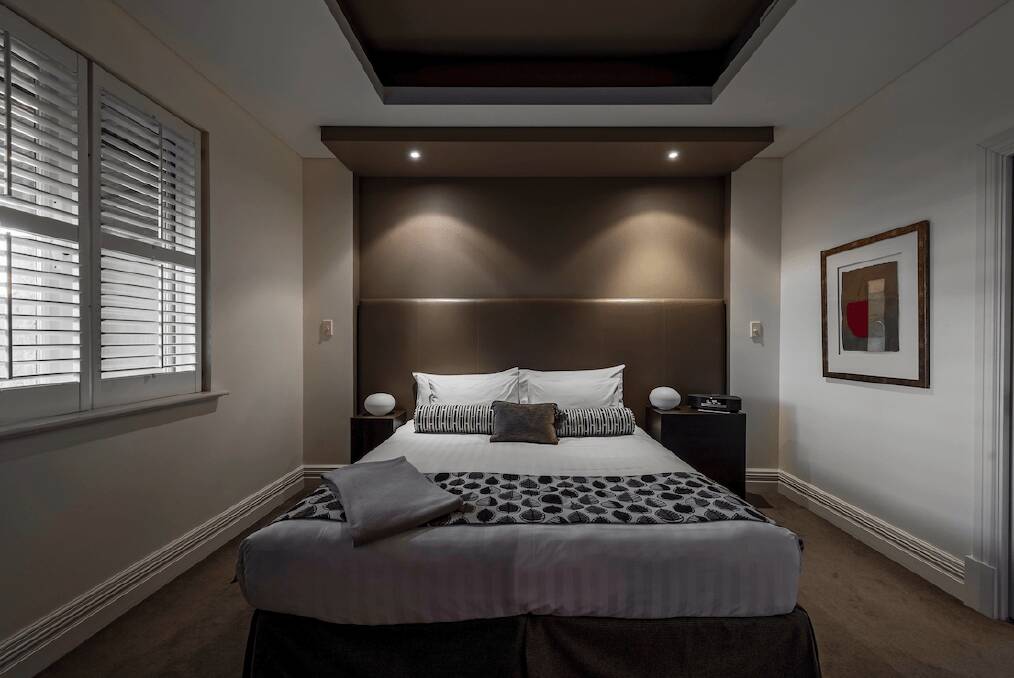Is this the most narcissistic holiday ever? I’m staying at a hotel bearing my name, dressed in a robe embroidered with my name, taking selfies in front of every sign with my name, on a solo trip to taste wine from the year of my birth.
When it comes to accommodation aspirations, The Louise has always topped my list — well, since 2005, when it was named after the new owner’s grandmother (not me), rebranded from The Hermitage. Respecting this history, I am happy to be a hermit in this hilltop hideaway.
After grandly announcing my arrival (“Helloooo, the Louise is here!”), I settle into a suite with a terrace overlooking a sloping, green landscape striped with vineyards.
Me, myself and I enjoy the three showers — a spacious double-header in the marble bathroom and an outdoor rain shower, enclosed by walls but open to the sky. Robed up, I recline for an hour beside the pool before my first outing in the Barossa Valley, the ‘must-drink’ region of South Australia.
Taste your birth year
But back to me. I have come to consume the vintage of 1974, when all the greatest creations were made. The scene of my self-indulgence is Seppeltsfield, the only winery in the world to annually release a 100-year-old single vintage wine, unbroken for more than 140 years.
This remarkable collection of Tawny is housed in a bluestone cellar, with each year’s barrel labelled ‘Port’, from the good old days when it was still allowed to be called that. (The Portuguese now object to its usage for wines not produced in Portugal’s Douro Valley.)
My guide, Nigel Thiele, explains the visionary foresight of Benno Seppelt, son of Seppeltsfield’s founder Joseph Seppelt. When his father died, Benno paid tribute by selecting a puncheon of their finest wine to mature in a separate room of the cellar, and instructed that it remain untouched for a century. In 1978, the 1878 Para Vintage 100 Year Old Tawny was released, instantly becoming an icon of Australian winemaking heritage.
This tradition has continued every year, filling the barn-like space with several rows of old oak barrels. Visitors can wander down the aisles to find their birth year for a sip.
When Nigel asks for my details, I cheekily declare that I am 100 — and that is how the 1921 vintage ends up siphoned into my glass.
Like my ego, Tawny is fortified; a blend of brandy and red grapes (shiraz and grenache in this case). The amber-tinged dark brown nectar is extracted from the barrel using a valenche, vaguely similar to a large syringe, which conjures images of drinking your own blood. However, as I have faked the age of a much older woman, I never find out it if my real birthday booze is anything like me: a little bit nutty, not particularly sweet, better with food.
So, how does a centenarian tipple taste? Honestly, it’s sensational. My tastebuds are tickled with toffee and mocha flavours that linger on the tongue. Seppeltsfield describes it as “crunchy roasted coffee beans coated in high quality dark chocolate…with the acidity of fig paste and dehydrated citrus to balance the intensity”.
While it does not transport me back in time to the Roaring Twenties, I do feel privileged to drink a drop of liquidised history.
There are faint pangs of guilt. One hundred years of careful cellaring and then it’s swallowed in seconds; gone from this planet forever.
Although it is possible to keep it longer by purchasing a gift-boxed bottle for $2000.
Meanwhile, the remainder of 1921 vintage will soon be transferred from its original puncheon into a smaller barrel to make way for this year’s vintage.
“The 2021 will refill it, plus topping casks are allocated to maintain a volume for 100 summers and 100 winters, destined for release in 2121,” says Nigel.

Amazing Appellation
Each evening I return to The Louise for dinner — either a burger at the new casual eatery, three75, or the full shebang in the fine-dining restaurant, Appellation. Both venues have the same glorious view, professional service and the expertise of South African chef Kyle Johns, who’s passionate about local seasonal produce.
Appellation’s seven-course menu ($105 per person) is offered with regional wine pairings (additional $45 per person). On this autumn night, it starts with blue swimmer crab, miso and sea grapes, matched with 2020 Sigurd Wines Chenin Blanc. Pork with muntree, wild fennel and purple yams is enhanced with mustard verjuice, accompanied by 2018 Turkey Flat Mataro. Fire bread and peri parfait are served on the side. Dessert is poached rhubarb, pepperberry and smoked sheep’s milk ice cream, with a 2017 Henschke Noble Gewurztraminer. Cheese and crackers, petit fours and coffee follow.

Completing my self-absorbed experience of eating, drinking and sleeping in Louise style, I take myself to bed. In my suite’s lounge room, a herbal teabag, with a personally addressed tag, awaits on a cup and saucer. Also on the table is a small jar of the chef’s signature mustard to take home as an edible memory, as well as a reminder note that the minibar is complimentary.
When I check out in the morning, a happy couple is thanking reception staff for so many special touches on their stay. It seems the VIP treatment is extended to every guest, not only the Louises.

Take me there
Fly: Jetstar, Virgin and Qantas fly to Adelaide daily from the east coast.
Drive: Barossa Valley is just over an hour’s drive from Adelaide.
Stay: The Louise is priced from $595 a night including breakfast, minibar and wi-fi.
Explore more: thelouise.com.au





